
Milk And Oatmeal
Oatmeal and milk form an energy-dense food that contains 120 calories per serving of 27 grams (444 calories per 100g). It contains 2.5g of fat (mostly saturated), 22g of carbohydrates, 6g of proteins and 170mg of sodium. Therefore, the nutrients needed to restore muscle mass are supplied adequately. Oats contain a high amount of dietary fiber, which slows the digestive process down, reduces glucose absorption and provides bulk to stools to prevent constipation. It also has a high amount of iron. Iron is essential in hemoglobin production. When hemoglobin saturation is low in COPD, there is an increased production of hemoglobin in the bone marrow to maintain the net volume of oxygen transported in the blood and this requires the extra iron.
- Important notification about information and brand names used in this slideshow!
- Photo courtesy of Robin by Flickr : www.flickr.com/photos/komponisto/2403643014/
- Nutrition therapy and pathophysiology by Katherine Sucher
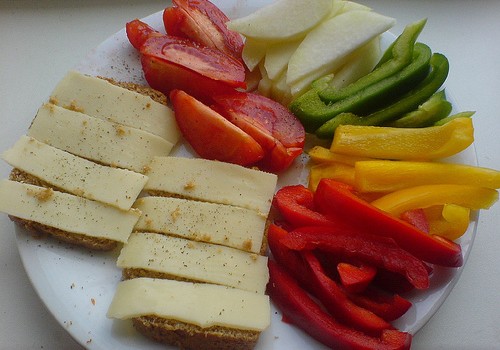
Cheese And Vegetables
Cheese contains 80 calories per serving of 28g (285 calories per 100g). 6g of fat (2/3 of which is saturated fats), 3g of carbohydrates and 5g of proteins together with a high amount of calcium and vitamin A make cheese an excellent source of energy. Calcium is essential for bone formation and muscle contraction. When serum ionized calcium levels are low, tetanic contractions of skeletal muscles occur (example: Chvostek sign, Trousseau sign). Low calcium results in poor bone mineralization and bones can become osteoporotic. Studies have shown that COPD may be a risk factor for osteoporosis. Green leafy vegetables are an excellent source of iron and vitamins. Various vitamins are required for the formation of new cells and cell repair because vitamins act as co-factors is many important biological reactions.
- Important notification about information and brand names used in this slideshow!
- Photo courtesy of georginchen by Flickr : www.flickr.com/photos/georginchen/537833441/
- Nutrition therapy and pathophysiology by Katherine Sucher
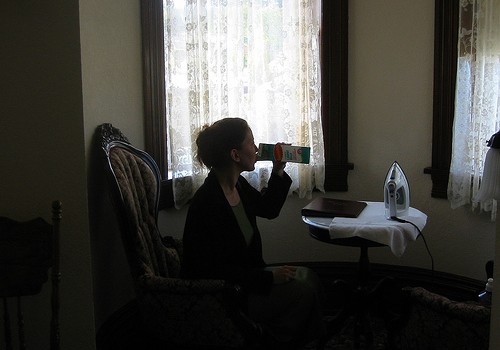
Drinking Milk
Whole milk contains 146 calories per serving of one cup (244g). It contains 8g of fat and proteins and 13g of carbohydrates. Milk is a vitamin-rich food. Vitamin A (249 IU per 244g) is necessary for proper vision and it is used to synthesize visual pigments in retina. Its deficiency may cause night blindness. Vitamin D (97.6 IU per 244g) is essential in calcium metabolism and bone formation. Its deficiency may cause poor bond mineralization and result in brittle bones. Folate is essential for neural development in fetal life and for proper functioning of bone marrow. Its deficiency may cause megaloblastic anaemia where red blood cells are enlarge and easily destroyed. Choline is necessary for synthesis of acetylcholine; an important nerve signal transmitter. There are myths that milk increases nasal mucus production. This is not so.
- Important notification about information and brand names used in this slideshow!
- Photo courtesy of atonal by Flickr : www.flickr.com/photos/atonal/49060626/
- Nutrition therapy and pathophysiology by Katherine Sucher
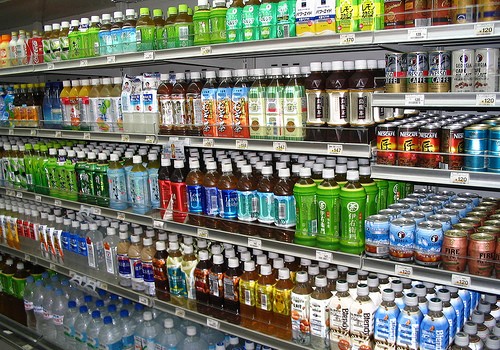
Drink Plenty Of Fluids
Adequate fluid intake is essential. Around 70 to 80% of the human body consists of water. Most of it is outside cells. Cells are in equilibrium with the fluidic extra cellular environment. Cells depend on the extra cellular environment for protection, nutrition and excretion. Water is required to thin out respiratory secretions. Continuous use of oxygen therapy will easily dry you out. Water is needed for the digestion of food. Various enzymes in the gastrointestinal system break up complex molecules by hydrolysis. Water molecules are essential in hydrolysis. Water has a low freeze point and a high boiling point and the net energy required to raise the temperature of water by one degree is high. Water can form ionic bonds with molecules dissolving them. Therefore water is an ideal biological solvent that will thin out respiratory secretions.
- Important notification about information and brand names used in this slideshow!
- Photo courtesy of Skil Fibber by Flickr : www.flickr.com/photos/skipthefiller/52380173/
- Nutrition therapy and pathophysiology by Katherine Sucher
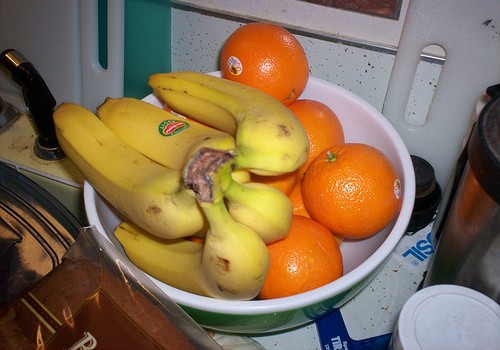
Oranges And Bananas Are Rich In Potassium
Oranges, bananas, king coconut, apricot, cherries, cabbage, cauliflower and spinach contain very high amount of potassium. Potassium is a major cation in the human body. Almost all of the potassium in the body is sequestered outside cells in the extra cellular fluid. Potassium crosses the cell membrane via various transport mechanisms. The NaKATPase pump sends potassium into the cell while it sends sodium out. This inflow and outflow is balanced at an equilibrium potential. This balance is altered and restored during nerve conduction, muscle contraction and transport of molecules across the cell membrane. Potassium is retained in the body or excreted according to its needs. This is done by the kidneys. Kidney failure comes with potassium retention and this has serious effects on body mechanisms. Abnormal heart rhythm, abnormal nerve conduction, abnormalities in muscle contraction, epilepsy, coma and death may result.
- Important notification about information and brand names used in this slideshow!
- Photo courtesy of Paul Swansen by Flickr : www.flickr.com/photos/pswansen/2362935663/
- Nutrition therapy and pathophysiology by Katherine Sucher
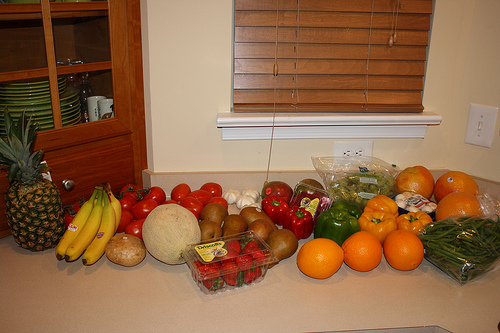
Fruits And Vegetables Must Be Fresh
Dried fruits have less water than fresh fruits, so the net amount of calories per unit weight ingested will be higher if you opt for dried fruits. Unfortunately, some vitamins and minerals are removed in the dehydration process. If you consume fresh fruits you will be fuller faster and you will get all the nutrients it has to offer. Fresh fruits have other advantages, such as being free of artificial preservatives. Some preservatives can interfere with various biochemical interactions. Fresh fruits are rich in dietary fibers which will help control blood sugar levels, prevent constipation and assist in the digestion of food.
- Important notification about information and brand names used in this slideshow!
- Photo courtesy of LilyWhitesParty by Flickr : www.flickr.com/photos/scrapstampsew/3339719622/
- Nutrition therapy and pathophysiology by Katherine Sucher
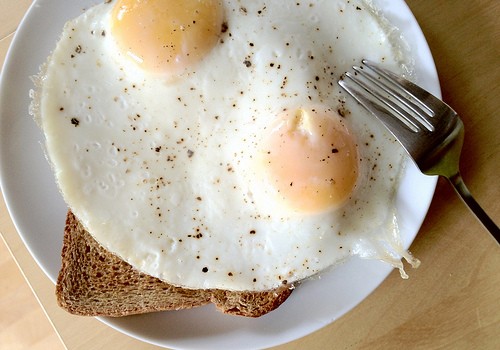
Eggs
Eggs contain 155 calories per 100g. They have 11g of fat, 1.1g of carbohydrates and 13g of proteins. Eggs are high in magnesium, sodium and potassium. Egg whites are rich in proteins while egg yolks are rich in fats. Sodium and potassium are essential forthe transmission of signals along nerves and are also required for muscle contraction. Hypokalemia reduces the excitability of nerves. Eggs also contain vitamin B12, which is an essential component of DNA synthesis. The formation of new red blood cells requires vitamin B12 and in its absence red blood cells become enlarged and break easily, causing macrocytic anemia. Magnesium is needed as a co-factor in various biochemical reactions such as regulation of lung function.
- Important notification about information and brand names used in this slideshow!
- Photo courtesy of Mike McCune by Flickr : www.flickr.com/photos/mccun934/6283627398/
- Nutrition therapy and pathophysiology by Katherine Sucher
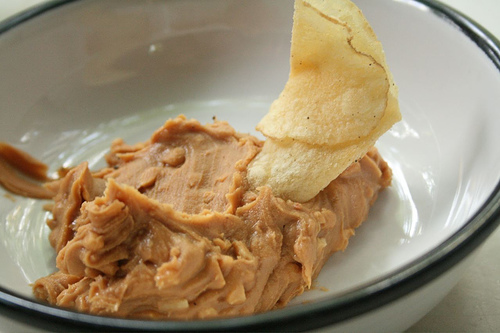
Peanut Butter
Peanut butter is a healthy food with regards to its high monounsaturated fat content. It also gives vitamin E, B, amino acids such as arginine. It is protective against cell damage due to its antioxidant action. Peanut butter is also known to cause allergies quite frequently, with results ranging from minor skin rashes to anaphylactic shock. Peanut butter has a high fat content. Unsaturated fats are better than saturated fats with regards to cholesterol levels and artery plaque formation. But the caloric content is high. Peanut butter made from 100% natural ingredients contains 100 calories per serving of 16g. This amounts up to 625 calories per 100g.
- Important notification about information and brand names used in this slideshow!
- Photo courtesy of thebittenword.com by Flickr : www.flickr.com/photos/galant/1202694142/
- Nutrition therapy and pathophysiology by Katherine Sucher
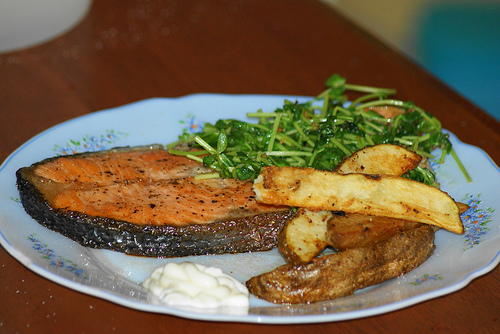
Salmon
Salmon is rich in polyunsaturated fatty acids, which are essential to the formation of cell structures. These fatty acids make components of the cells, have an anti-inflammatory action and protect against atherosclerosis. Salmon also contains a high amount of highly bioavailable calcium. Calcium makes up the most of the non-organic components in bones. It is essential for heart muscle function, skeletal muscle contraction and smooth muscle contraction (controlling vessel diameter, controlling airway size and other functions). Some studies have shown that omega 3 poly-unsaturated fatty acids may increase the quality of life of cancer patients, making it a good choice for anyone affected by cancer.
- Important notification about information and brand names used in this slideshow!
- Photo courtesy of ~ezs by Flickr : www.flickr.com/photos/missizss/3312866369/
- Nutrition therapy and pathophysiology by Katherine Sucher

Use Herb Spices Instead Of Salt
Pure salt is only sodium chloride but due to production and source impurities it may also contain potassium, magnesium and other minerals in minute quantities. While salt is an essential ingredient for taste and to maintain an adequate intake of important cations like sodium and potassium, salt intake is detrimental for people with certain medical conditions, like high blood pressure. Herb spices give a significant amount of vitamins and minerals that will help healing and repair. Excessive salt in your diet will retain fluid in the body. This will increase fluid collection in lungs of a COPD patient and result in poor oxygenation. Therefore a salt restricted diet will improve the quality of life for COPD patients.
- Important notification about information and brand names used in this slideshow!
- Photo courtesy of Casey Fleser by Flickr : www.flickr.com/photos/somegeekintn/3397198946/
- Nutrition therapy and pathophysiology by Katherine Sucher


_f_280x120.jpg)
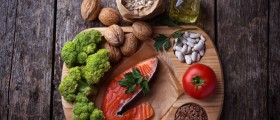


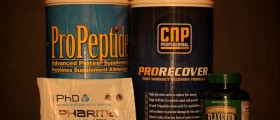


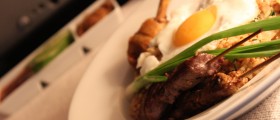





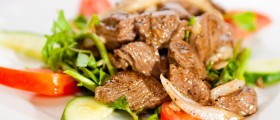

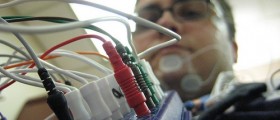
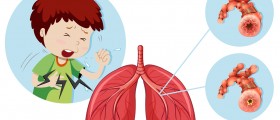
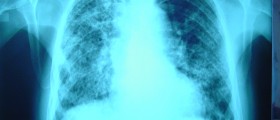



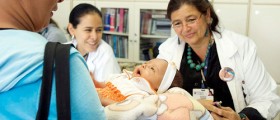



Your thoughts on this
Loading...